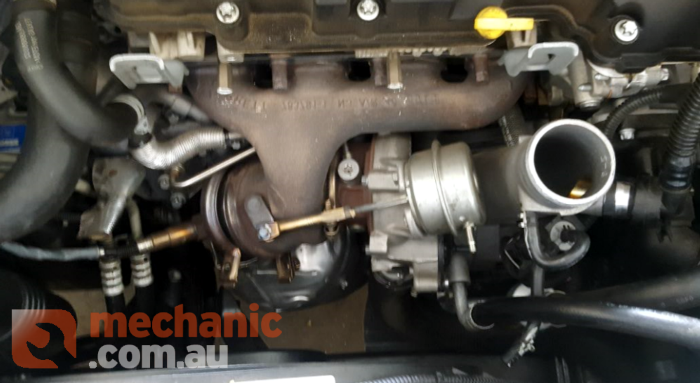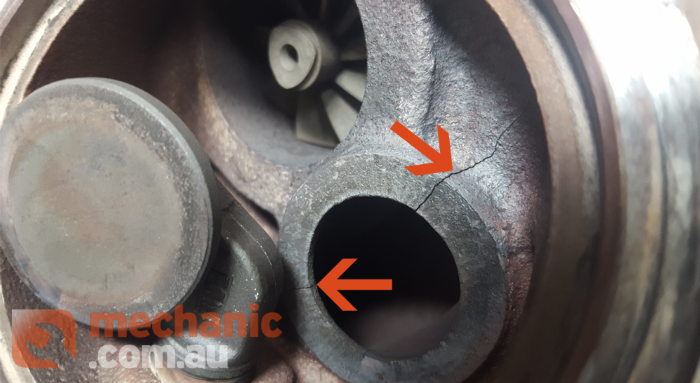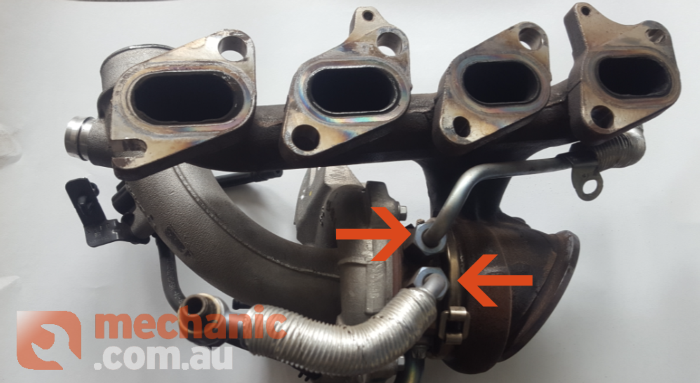Check engine light illuminated and vehicle lacking power. Vehicle may appear to (or may actually) be going into limp home mode.
Pulling over and cycling the ignition may or may not resolve the issue temporarily.

Carry out system-wide scan on vehicle
P0299 - ‘Boost Pressure Outside of Specified Range’ will be commonly logged.
Clear fault code and road test vehicle ensuring it is currently at, or reaches normal operating temperature.
Make sure to carry out WOT (Wide-open throttle) test going up a hill or clear section of road.
Graph Boost Pressure PID and observe any abnormal operation (under or overboosting under load)
Check if diagnostic fault code re-logs.
Remove turbocharger dump pipe and carefully inspect casting around internal wastegate port for cracks.

Remove pneaumatic wastegate actuator and check for side-to-side movement in wastegate shaft.
The video below shows that once the wastegate flap is in the closed position, it can be further rotated, allowing exhaust gas to bleed past the wastegate flap.
Check for breakdown or degradation of catalytic converter monolith using a borescope.
The 1.4L iTi engines run 2x catalytic converters, if the front catalytic converter is degraded, the exhaust system should be further dismantled and inspected and components replaced as necessary.
Supply and fit new turbocharger assembly and catylitic converter/s as necessary.
Ensure all o-rings and gaskets are renewed. It is also recommended to change the water cooling pipe assemblies as shown in the image below.

Fill and bleed cooling system, allow engine to heat up, re-tension exhaust manifold nuts and check for oil leaks.
Carry out road test over a full drive cycle and ensure no abnormal conditions are present such as rich/lean mixture conditions or high fuel trims.
Mechanic.com.au Quick Tip
(Note that the 1.4L iTi engine mentioned in this article is NOT VGT!)
Three of the most common causes of failure of Variable Geometry Turbochargers
Three tips to extend the life of a Variable Geometry Turbocharger
Do you have an interesting case study?
Send it in (along with images) to: [email protected] to feature your workshop (and case study) on the site!